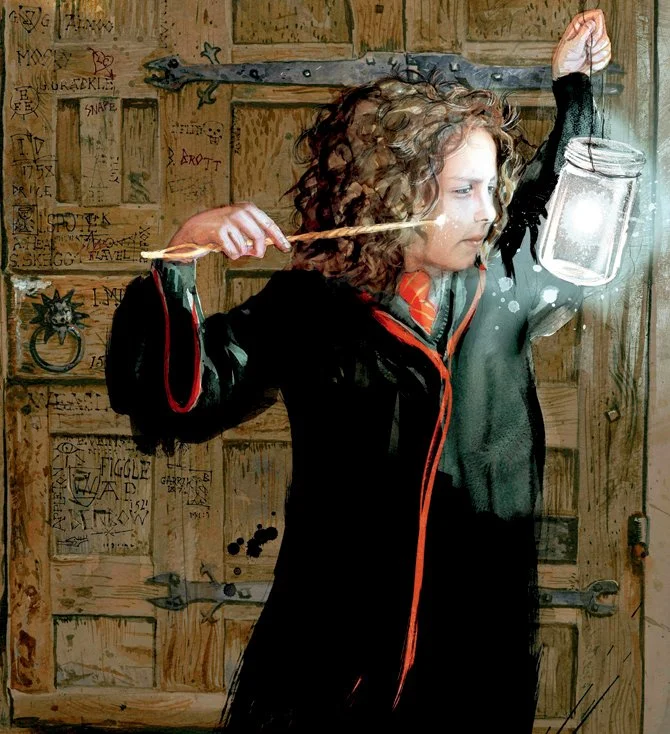In the autumn I ran the second #WorldCupofChildrensBooks on Twitter. It followed previous polls to find the best overall Children’s book (The Lion the Witch and the Wardrobe), the most popular Roald Dahl character (Matilda) and the greatest children’s TV series (Bagpuss).
This time round we were ranking the most popular children’s book characters. I had a hunch that it might produce a slightly different set of results, or at least shake the well established running order up a bit. And so it proved. Among the familiar names, were some popular secondary characters and several who are better known in other media.
Out of the 144 original contenders, here’s a list of the top 20 (in reverse order).
Hermione Granger (Harry Potter)
Famous Harry Potter didn’t even make it to the final 144 after a qualifying heat ranked him only the fourth most popular character in his own series. Why do people love Hermione so? As the child of non-magical parents, she has an outsider status even stronger than Harry’s. She’s also the character who most strongly reflects the sensibilities of the bookish reader (as well as J.K. Rowling herself). Or perhaps it’s simply the moment in the movie version of the Prisoner of Azkaban when she punches loathsome Draco Malfoy in the face?
Baloo (The Jungle Book)
Described by Rudyard Kipling simply as a ‘sleepy brown bear’, Baloo acts as a friend and teacher to the man cub, Mowgli, who proves to be his most challenging pupil. But I wonder how many people voted for him here in his scat-singing, happy go lucky Disney incarnation (as voiced by Phil Harris), rather than the somewhat more serious expert in the ‘law of the jungle’ featured in Kipling’s books?
Snoopy (Peanuts)

Possibly the world’s most popular children’s book character, yet you rarely find Snoopy ranking in these sorts of lists. Possibly it’s because of snobbery about comic book characters, but Snoopy remains a singular presence within Peanuts and the wider pantheon of children’s books. He’s laconic, self-obsessed and possesses a fertile imagination – yet still seems unable to write the great novel he knows is inside him.
The Tiger (Who Came to Tea)
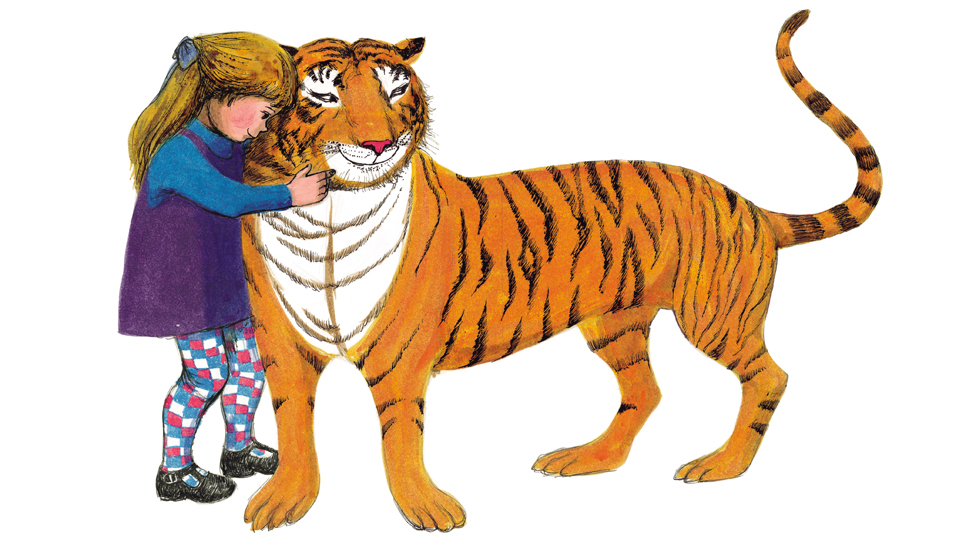
Easily the most enigmatic character to make the list. The Tiger remains one of the most discussed characters in children’s literature. Does he represent another man, cuckolding father who is out at work? Or is he, as Michael Rosen believes, a manifestation of the Gestapo who invaded author Judith Kerr’s own childhood home? Kerr thought not: ‘I don’t think one would cuddle the Gestapo, even subconsciously.’
Alice (in Wonderland)

Whether you’ve read the book, seen the various movies or simply imbibed her iconography, Alice, the original children’s book protagonist is still everywhere. The character inspired by young Alice Liddell continues to transcend her somewhat scandalous origins. In a book packed with fascinating grotesques, Alice stands above them, sharp as a tack and forever curious.
Captain Haddock (Tintin)
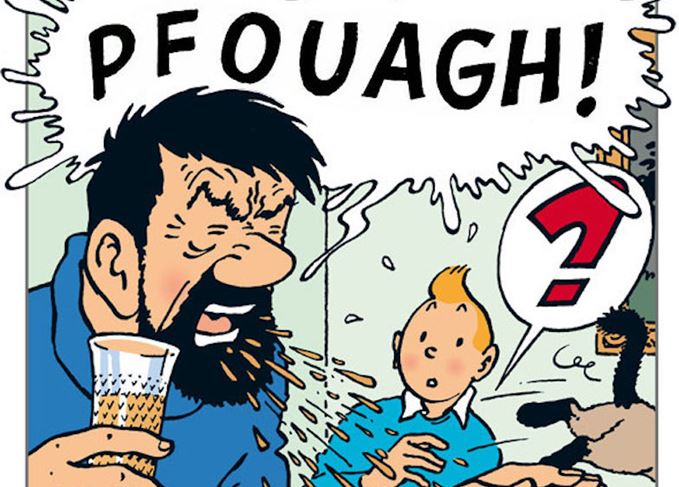
Alcoholic, foul mouthed, bad tempered and essentially unadventurous, Captain Haddock has the makings of an excellent antagonist, and yet Hergé decided to cast him as Tintin’s best friend. Without Haddock’s funny, world-weary presence, I suspect Tintin would have long since faded away – a relic of Belgium’s colonial history.
Adrian Mole
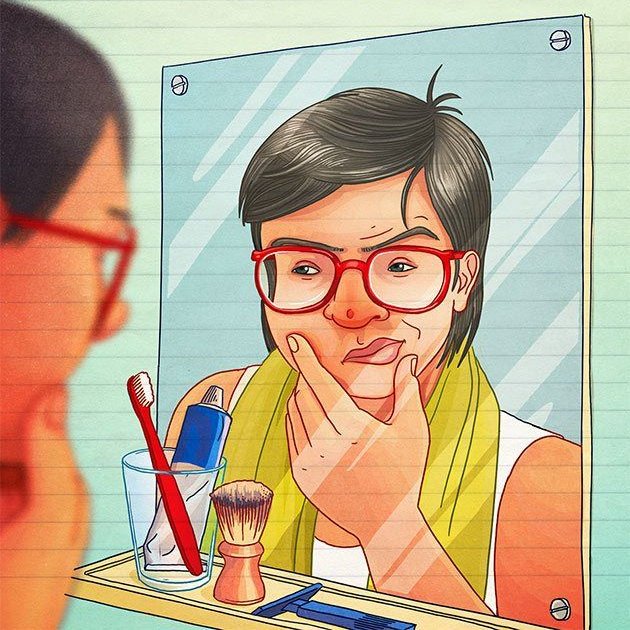
“Perhaps when I am famous and my diary is discovered people will understand the torment of being a 13¾ -year-old undiscovered intellectual.” Adrian Mole speaks to anyone who has aspired to make a creative mark on the world. Sue Townsend’s unfulfilled genius stays with us not because he’s relatable, or indeed particularly recognisable as a teenager but because he remains a tragic reflection of the imposter that lurks inside us all.
Mary Lennox (The Secret Garden)
The allure of a magical place, hidden from the adult world is a potent, timeless idea, but Frances Hodgson Burnett’s heroine remains heroically difficult, prickly and frequently dislikable. Daniel Hahn observes that the Secret Garden provides ‘almost a revolution in children’s literature when an unattractive child, acting reprehensibly, can achieve such a moral victory.’
Anne Shirley (of Green Gables)
“The story of a spunky, strange, but endearing orphan who hits Green Gables farmhouse in a splatter of exclamation marks, apple blossom, freckles and embarrassing faux pas.” Margaret Atwood wrote about her favourite children’s book character as one who “breaks the taboo forbidding outbursts of temper on the part of young people.”
Lyra Belaqua (His Dark Materials)
Seeing Lyra on a list populated with ‘strong female characters’ it’s tempting to conclude that she is simply the product of a literary heritage that begins with Alice’s curiosity, takes in Anne Shirley’s infectious enthusiasm and follows the jagged edges of difficult Mary Lennox. But Lyra is undeniably modern, a girl struggling to negotiate a world where the parameters keep shifting. No matter what she does, it’s never going to be quite enough to save the day in the way she imagined.
Matilda Wormwood (Matilda)
One of the hot favourites in this competition, and I suspect in any poll of classic characters of children’s literature, Matilda Wormwood combines the qualities of the plucky underdog, an introvert’s love of reading with a magical and often naughty sense of justice.
Piglet (Winnie the Pooh)
There was also a strong showing for Eeyore in this Twitter poll, but Piglet pipped him at the post. Trying to write about him as a solitary character is tricky – in isolation he could be seen a producer of anodyne inspirational quotes. Piglet’s appeal comes through his relationship with other, bolder residents of the hundred acre wood. It’s against their many character flaws that he stands out; a surprisingly solid foundation and a trier, who despite his size is often the reason anything gets done.
Bilbo Baggins (The Hobbit)
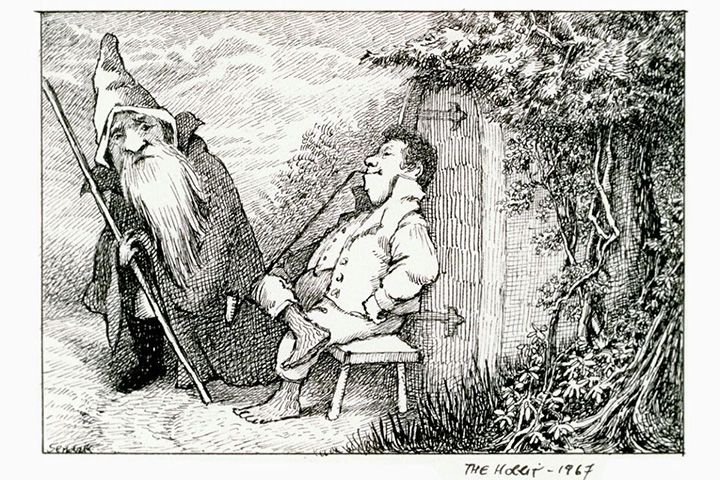
Someone suggested that I’d “got the wrong Baggins”, when Bilbo rather than his cousin Frodo went into bat for Tolkien’s Middle Earth team. But for me and many others, it’s the comically stuck in his ways, middle-aged Bilbo who remains the original and still the best reluctant hero in children’s literature.
Mog
The second cat, and the second Judith Kerr character to make the top 20, congratulations Mog! Throughout this long running series, Mog was both an anthropomorphic hero and a keenly observed sketch of Kerr’s own house cats during her long life. She even managed to kill her beloved cat off (in Goodbye Mog), without causing too much distress.
Dido Twite (The Wolves Chronicles)

There was a huge amount of love for Joan Aiken’s beloved street urchin Dido Twite, the eventual star of a book series that began without her (in The Wolves of Willoughby Chase). Aiken introduced Twite in the sequel, Black Hearts in Battersea, then killed her off, before sensibly thinking better of it, following her around the world and into young adulthood without losing any of her youthful vim.
Arrietty (The Borrowers)

Thirteen years old and seven inches tall, Arrietty Clock could easily have been overwhelmed by the fantastical high concept of Mary Norton’s world of the Borrowers, little people who literally carve out a life in the world of gargantuan ‘human beans’. But it’s her boldness in pushing against the boundaries set by her family that gives the story its momentum and gives Arrietty her classic status.
Pippi Longstocking
A superhuman nine year old Swedish girl, who lives apart from her pirate father and shares a house with a horse and a monkey. Pippi Lognstocking sounds like the sort of character a child might invent without really giving the issue much thought. That Astrid Lindgren managed to breath such fierce life into her all conquering heroine is extraordinary feat.
Jo March (Little Women)

Following the huge success of Little Women, author Louisa May Alcott began to receive letters asking who the girls were going to marry. “As if that was the only end and aim of a woman’s life.” Alcott wrote. “I won’t marry Jo to Laurie to please anyone.” Which perhaps explains the enduring popularity of her tomboyish lead.
Moominmamma
More than a series of books, Tove Jansson’s Moominvalley is an imaginative universe packed with memorable characters. Special love was reserved for Moominmamma, a version of Tove’s own mother, Ham. Often a supporting presence in the stories, she is often overshadowed by her husband and numerous overbearing house guests. But it is Moominmamma who develops in the most satisfying fashion later in the series, discovering her own identity beyond others through her art.
Paddington

First appearing in the 1958 book, A Bear Called Paddington, Michael Bond and Peggy Fortnum’s creation was for many years overshadowed an industry of toys and merchandise that did little to convey the character’s appeal. But it was another spin off, a 2014 film, that restored the infectious character of this disaster prone bear in the public consciousness.
AND THE WINNER IS…


